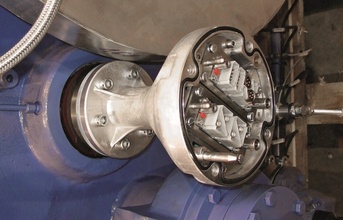
In all scenarios, using plug-in connectors provides convincing proof to users in the form of a reduction in costs and time expenditure. Connectors speed up installation and increase the modularity of a wind turbine, reduce investment and operating costs, and provide options for the optimisation and modularisation of the power cabinets. In addition, without a modular design the on-site logistics of onshore plants with an average output of 3.3 MW - including connectors - would quickly reach their limits. As a rule, the cost associated with the use of plug-in connectors is usually amortised within just a few years in the form of cost and time savings.
In addition, HARTING produces LED lighting systems as turnkey system solutions with pluggable device connection, pre-assembled cables, distribution units and, if required, uninterrupted power supply. Lights can be sited in a plant in such a way that their total number remains low and energy costs decrease.
HARTING also offers high-precision current transformers for metering for WT which can be used to connect display devices such as current meters and voltage meters. On request, HARTING can also have its current transformers for metering specially calibrated by a state-approved body in order to further boost the precision of a metering and billing process that employs the devices.
With its innovative products and solutions, the HARTING Technology Group is a partner to the wind industry and is contributing to the energy transformation. HARTING researches and produces - partly autonomously, partly in cooperation with wind turbine manufacturers - concepts, components and customised offers for the specific requirements of wind turbines on land and at sea. The company focuses heavily on connector solutions for the increasing digitisation of plants, among other in the areas of fiber optics and sensor technology.
END


























